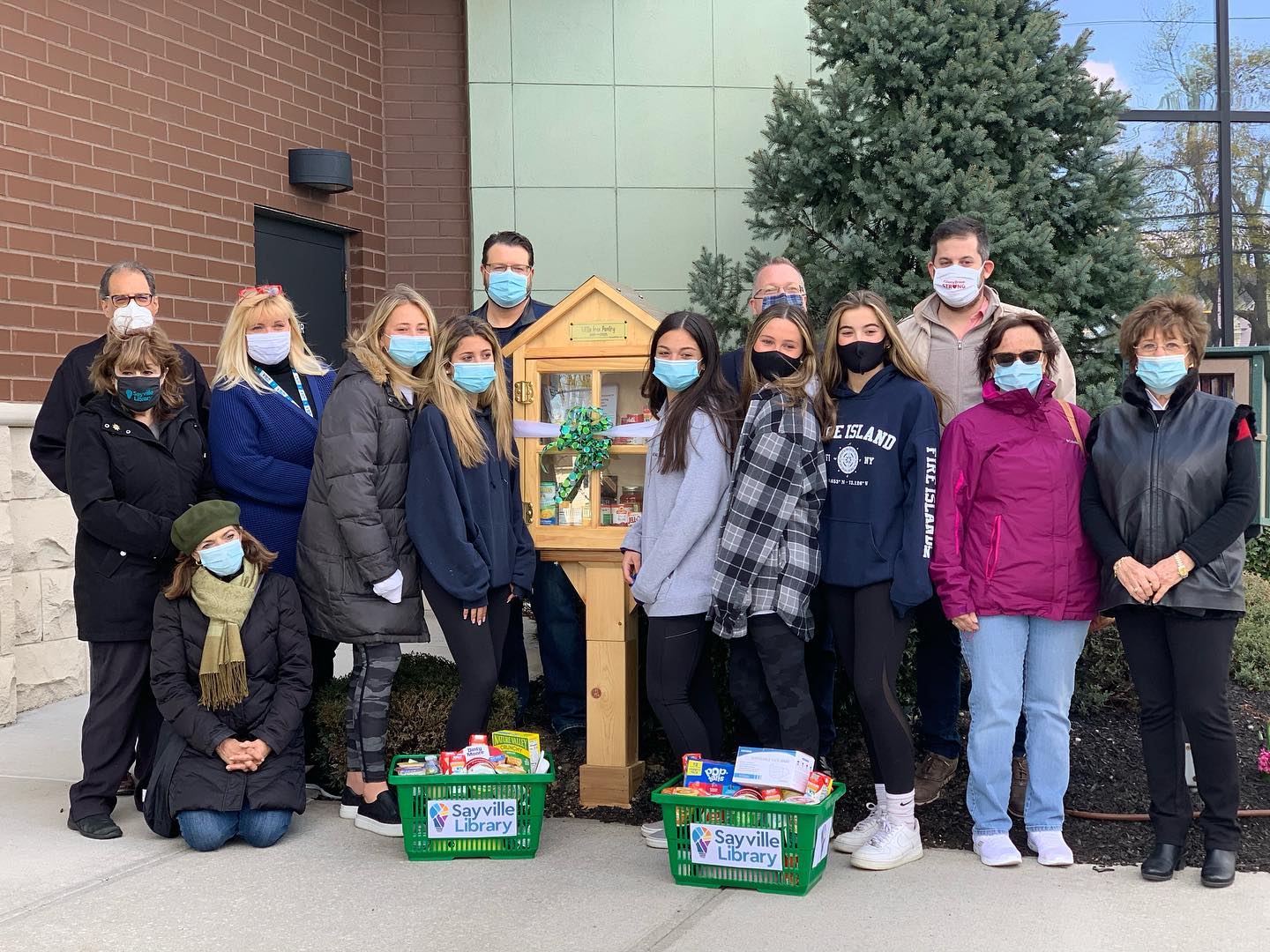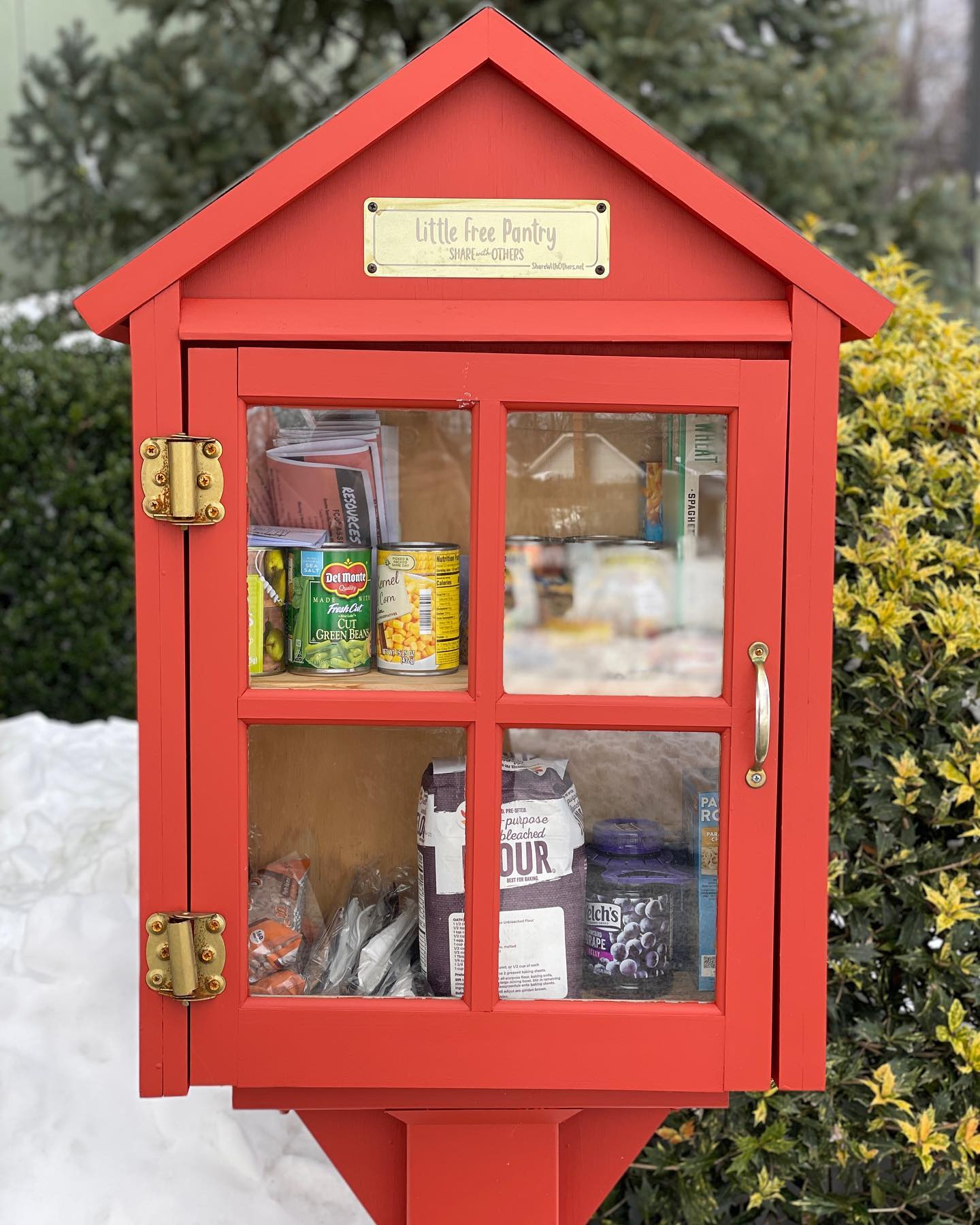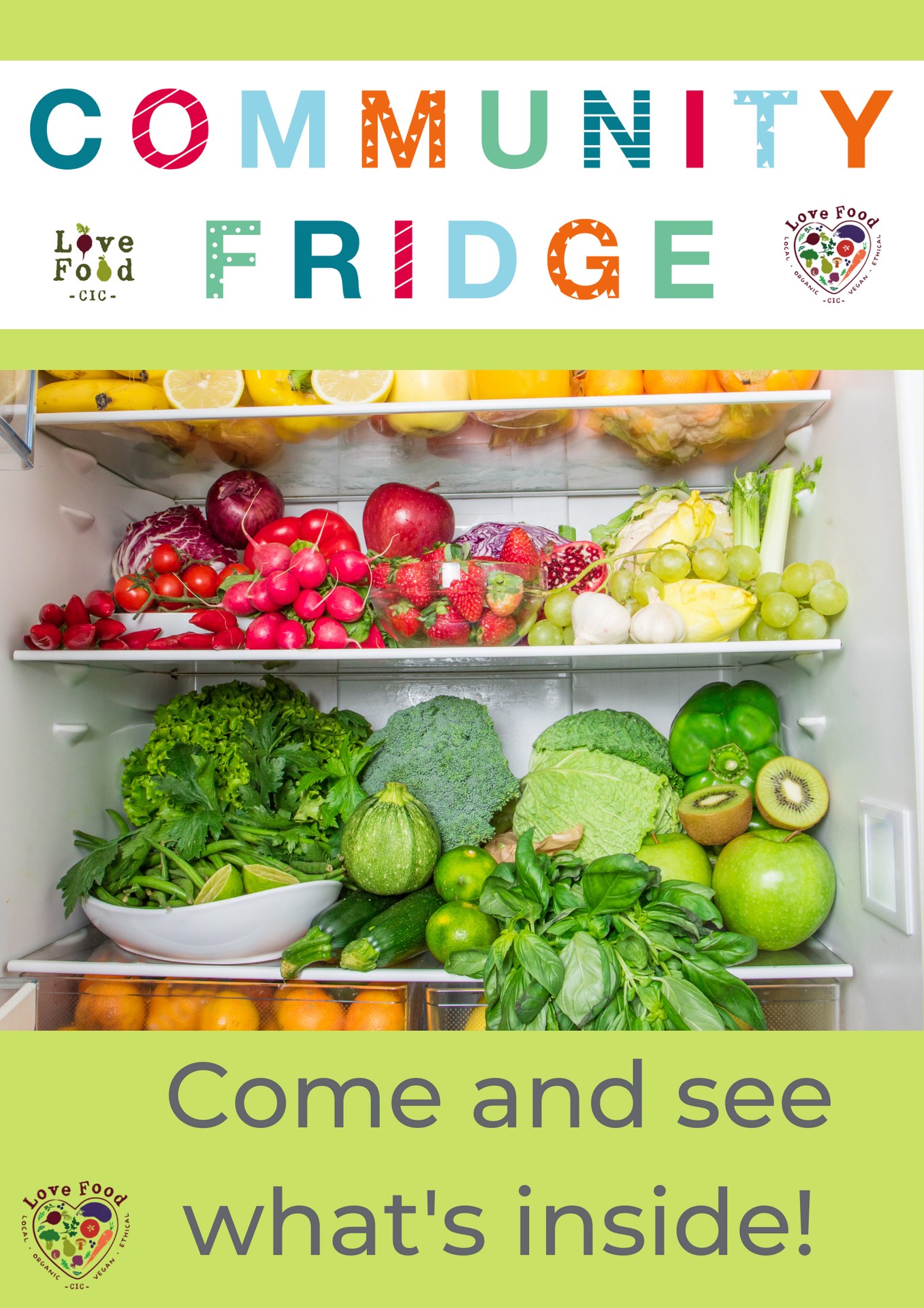Hunger-Free Libraries: Food Pantries and Fridges

Sayville Library on Facebook
Food insecurity is a problem that has drawn increasing attention in recent years. Libraries have a long, rich history of partnering with government and nonprofit agencies to help improve food access, and lately they have been helping in new and creative ways. One way libraries are doing this work is by creating community pantries, fridges, and blessing boxes.
Blessing boxes apply the Little Free Library concept to food pantries, offering nonperishable food and hygiene items in small, freestanding boxes located in public areas, often located in or near public libraries. These grassroots projects are found in many communities across the country and created and stocked completely by volunteers, who often communicate using Facebook groups. Most Blessing Boxes feature this message: “Our only rule: take what you need; leave what you can.”
One benefit of blessing boxes and community pantries is that they provide expanded access (often 24 hours a day) to food for people who might have difficulty accessing food pantries during traditional hours. Community pantries also help address the stigma and other barriers to asking for help, because people can take what they need from the box without having to fill out paperwork or provide personal information.
How libraries are helping
Although libraries are well-positioned to host community pantries, it’s important to remember that the resources and labor don’t need to come from the library alone. When blessing boxes and pantries are community-led and supported, connections are formed, and everyone who participates can benefit from contributing to a shared purpose. Here are some highlights of ways libraries and communities are helping to address hunger, as well as tips and resources to kickstart similar offerings in your own community.
- This WebJunction interview with Jennifer Johnson-Spruce features information about the Blessing Box she started at Cooke County Library in Gainesville, Texas, where she serves as director.
- Flager County Public Library in Florida is putting their own spin on community pantries by offering their community a chance to exchange both books and canned good in Food for Thought kiosks.
- Penn Hills Public Library in Pennsylvania partnered with their local food bank to open a community pantry and fridge in their library to help increase access to fresh produce, eggs, and other perishable food items.
- Forest Park Public Library in Illinois recently launched their new community fridge, which is open to anyone who needs help accessing perishable food items. They also offer a pantry with non-perishable food items.
- Sayville Library in New York offers a Little Free Food Pantry and a Little Free Pet Pantry. They post frequent updates on their Facebook page and offer volunteer opportunities for local teens who are seeking community service hours.
- Columbus, Ohio has a robust Blessing Box network and offers information on their website about how to get involved and a map featuring all Blessing Box locations.

on Facebook
Tips for building your community pantry or fridge
Is your library considering offering a community pantry, fridge, or blessing box? Check out some of these articles and resources to help you get started.
- This article from Shareable offers a step-by-step approach for getting started: How to create a little free community pantry or fridge
- The WeTHRIVE program in Forest Park, Ohio opened their city’s first Blessing Box in February, 2022 and shared helpful tips and strategies for getting started.
- How to Start a Community Fridge—This article gives some background on community fridges in Philadelphia and offers 5 tips for starting your own.
- How public libraries are part of the solution to food insecurity—This article by Tom Llewellyn offers a recap of an interactive dialogue hosted by Let’s Move in Libraries and librarians who are working with food access and literacy programming.
More reading and resources

Library - Exeter on Facebook
- Public libraries are giving away an insane amount of free food by Noah Lenstra takes a deeper dive into food insecurity issues and how libraries are helping.
- Communities: Rural Homelessness, Food Insecurity, and Lived Experience: This talk from the ALA 2022 Social Responsibilities Roundtable Homelessness Summit covers food insecurity and how libraries are helping with little free pantries. Check out their Facebook post for more information.
- Let’s Move in Libraries—This project focuses on supporting healthy living in public libraries through programming and resources that support healthy eating and an active lifestyle.
- On racial equity in food systems, see Center for Environmental Farming Systems, Committee on Racial Equity in the Food System at North Carolina State University, and Food System Racial Equity Assessment Tool: A Facilitation Guide from University of Wisconsin.
- The Fresh Food Collective in New York collects and redistributes surplus produce from local farms, the Greenwich Community Garden, and home gardens, at local libraries.
WebJunction resources
For further reading and resources, check out these WebJunction articles and webinar:
- Read about how a Texas library started their own blessing box in Blessing Box: Take What You Need, Leave What You Can.
- Hunger and Libraries: Snacks, Backpacks and More offers additional resources to explore how food insecurity is impacting your community.
- Food Access and Seed Libraries in Rural Public Libraries—This WebJunction webinar features firsthand experiences with starting seed libraries and tips for getting started with a seed library of your own. Visit the webinar page for additional resources, including the webinar slide deck, learner guide, and recommended reading.
- Learn how libraries are helping address food insecurity through gardening and seed sharing programs in these articles: Growing Library Garden Programs and Sow Connection with Seed Libraries.
- Check out additional reading and webinar recordings on food and libraries.
